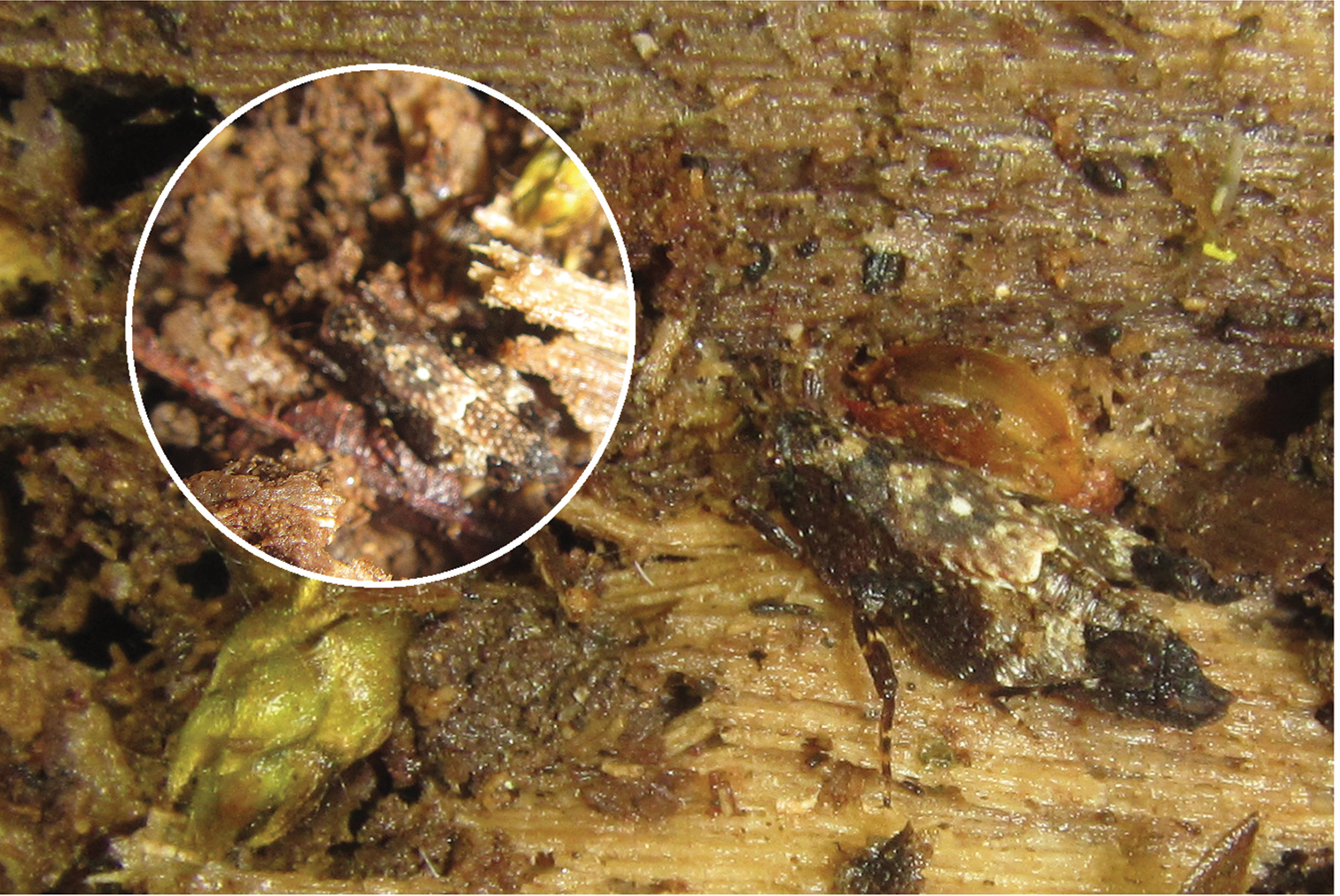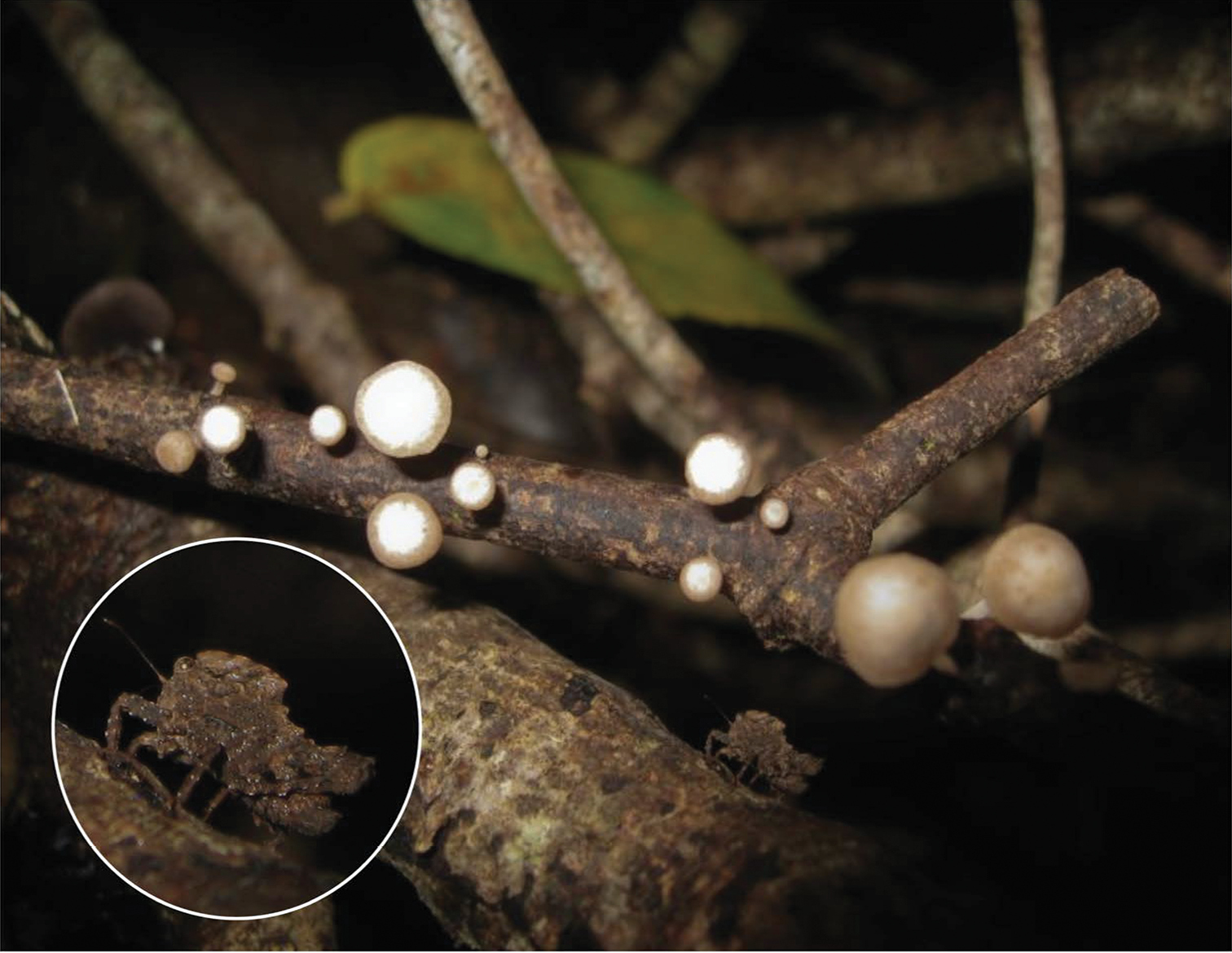Citizen scientists discover Anaselina, Paraselina & Selivinga - published in Zookeys
Eight new records of the rare Australian Tetrigidae were posted on online social media (mostly on iNaturalist, but also in Questagame and in Flickr) by citizen scientists (among which @matthew_connors, @nicklambert, @imcmaster, @questagame, & @reiner) and are now published: Skejo J, Connors M, Hendriksen M, Lambert N, Chong G, McMaster I, Monaghan N, Rentz D, Richter R, Rose K, Franjević D (2020) Online social media tells a story of Anaselina, Paraselina, and Selivinga (Orthoptera, Tetrigidae), rare Australian pygmy grasshopper. ZooKeys 948: 107–119. https://zookeys.pensoft.net/article/52910/list/11/
The coolest thing about this study is maybe that one of the co-authors is an 11-years old naturalist who used QuestaGame App.
Here is an overview of the new records, whose photos are found online, and a bit on the species ecology from the paper we have just published. Full site map is available at the link https://zookeys.pensoft.net/article/52910/zoom/fig/11/

Anaselina minor
https://zookeys.pensoft.net/article/52910/zoom/fig/12/
http://orthoptera.speciesfile.org/Common/Basic/ShowImage.aspx?TaxonNameID=1100554&ImageID=207963

The Tiny helmed groundhopper was photographed for the first time alive in its natural habitat by Matthew Connors. Original size figure available at link https://zookeys.pensoft.net/article/52910/zoom/fig/12/.
"The Tiny helmed groundhopper was described under the name Vingselina minor one century ago, based on a single female from Herberton, which lacks hind legs. Storozhenko re-described the species based on freshly collected individuals from Cape Tribulation. The species is readily distinguished from other Australian taxa by the set of the following characters: 1) flat pronotum, whose anterior margin only partly covers the fastigium; 2) short pronotum, leaving most of the abdomen uncovered; and 3) prominent fastigium (in lateral view).
The species has hitherto been known from two localities, the type locality (Herberton) and the Cape Tribulation. Here we also report a third locality, Wooroonooran, ca. 30 km NW of the type locality. The species inhabits rainforests, where it can be found in wet, but also in relatively dry leaf litter. (Skejo et al. 2020)"
Paraselina brunneri
https://www.inaturalist.org/observations/22360480
https://www.inaturalist.org/observations/19947697
https://www.inaturalist.org/observations/35283526
https://www.inaturalist.org/observations/19373510

Griffin took a few photos of this interesting critter when he was 9 and co-authored the paper as an 11 years old junior researcher.
"The Angled Australian barkhopper Paraselina brunneri was hitherto only known to us from a single female holotype, collected in the surroundings of Sydney, and described more than 130 years ago by Bolívar. The species has never been recorded since. There is considerable infraspecific variability in size, coloration, and angulation of the median carina of the pronotum. Differences separating P. multifora from P. brunneri are not reliable. The species inhabits rainforests of SE Queensland and NE New South Wales, where it dwells on bark. Griffin Chong noticed a specimen of this unusual grasshopper as an irregular bump on the bark of a tree he was walking past on the Morelia track (Mt Glorious). (Skejo et al. 2020)"
Paraselina trituberculata
https://www.flickr.com/photos/imbala/8466615980

The only known photo of the Triple-bump Australian barkhopper was taken by Kathy Rose, a retired English language teacher. In her own garden.
"The Triple-bump Australian barkhopper Paraselina trituberculata was described almost 90 years ago from a single female (holotype) from the rainforest of the Mount Tamborine, and has never been reported again. Here, we not only report the species for the first time since the description, but also report a male specimen for the first time. The male was found in the rainforest of Wilsons Creek sitting on bark that was full of mushrooms. Wilsons Creek is ca. 70 km SE from the Mount Tamborine, the type locality of the species. The species is known from two rainforest localities situated on the border of Queensland and New South Wales, south of Brisbane.
P. trituberculata is easily distinguished from Australian Batrachideinae and all the other pygmy grasshoppers in the world by the angled pronotum (high in the cephalic part, low in caudal part) that bears three smaller warts on the median carina. (Skejo et al. 2020)"
Selivinga tribulata
https://www.inaturalist.org/observations/37612204
https://www.flickr.com/photos/naturenoises/7570494412
https://www.lifeunseen.smugmug.com/insects/grasshoppers-crickets-katydids/grasshoppers-suborder-caelifer/tetrigidae-pygmy-grasshoppers
"The Tribulation helmed groundhopper was described under the name Selivinga tribulata in 2019 by Storozhenko. This is the first crested Australian species to be described and one of the most easily recognizable species from the continent. Not only is it easily identifiable by its prominent crest, but also by the low position of the antennal grooves.
The species inhabits the northern part of Queensland and is, for now, known from Cape Tribulation (the type locality), Kuranda, Tully Gorge, and Kingfisher Park. Selivinga tribulata is a rainforest species. It can be found in relatively dry leaf litter as well as the normally moist leaf litter that one associates with rainforests, but also is attracted to light. In Kuranda (Queensland) adults have been observed every month of the year. (Skejo et al. 2020)"


